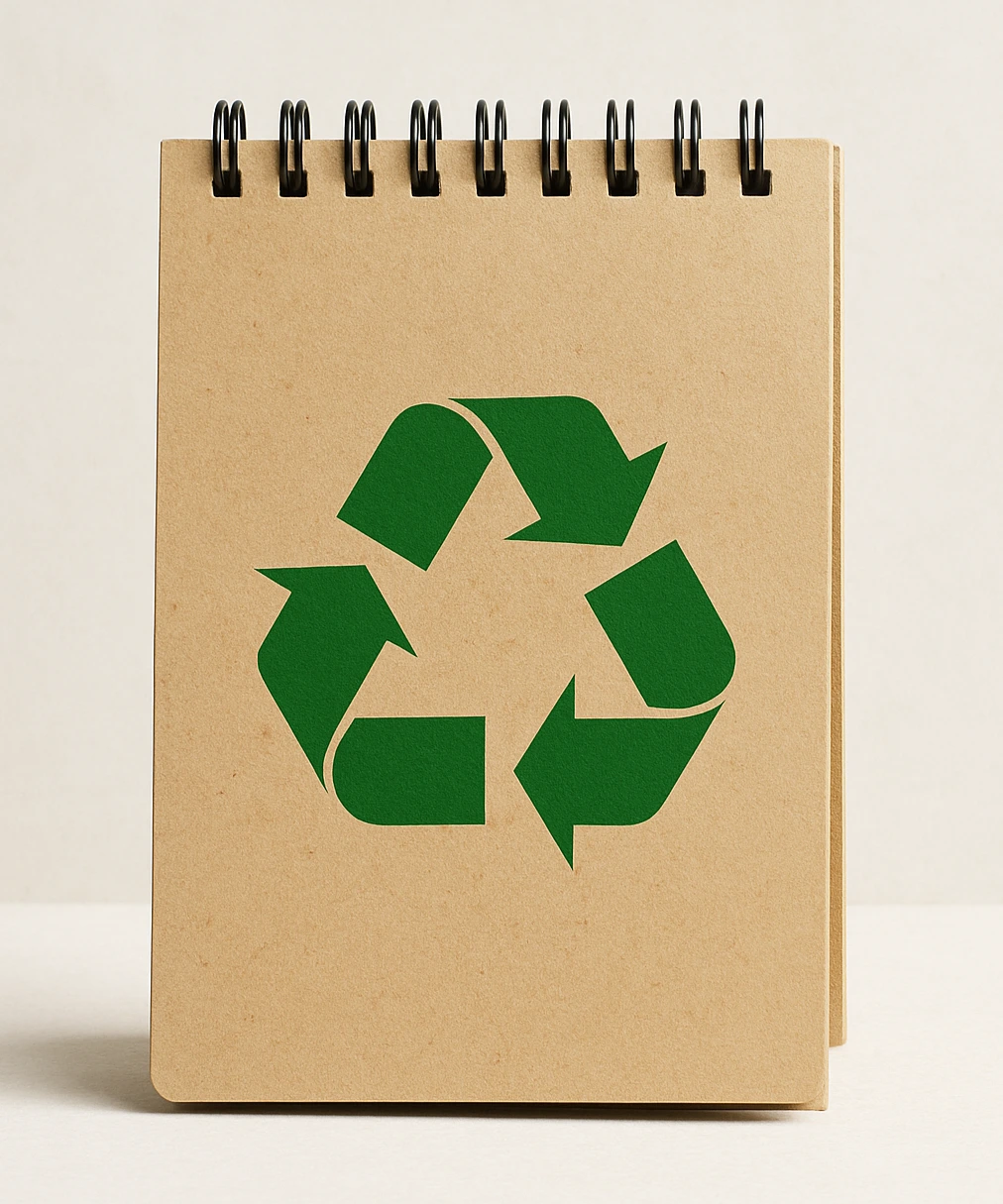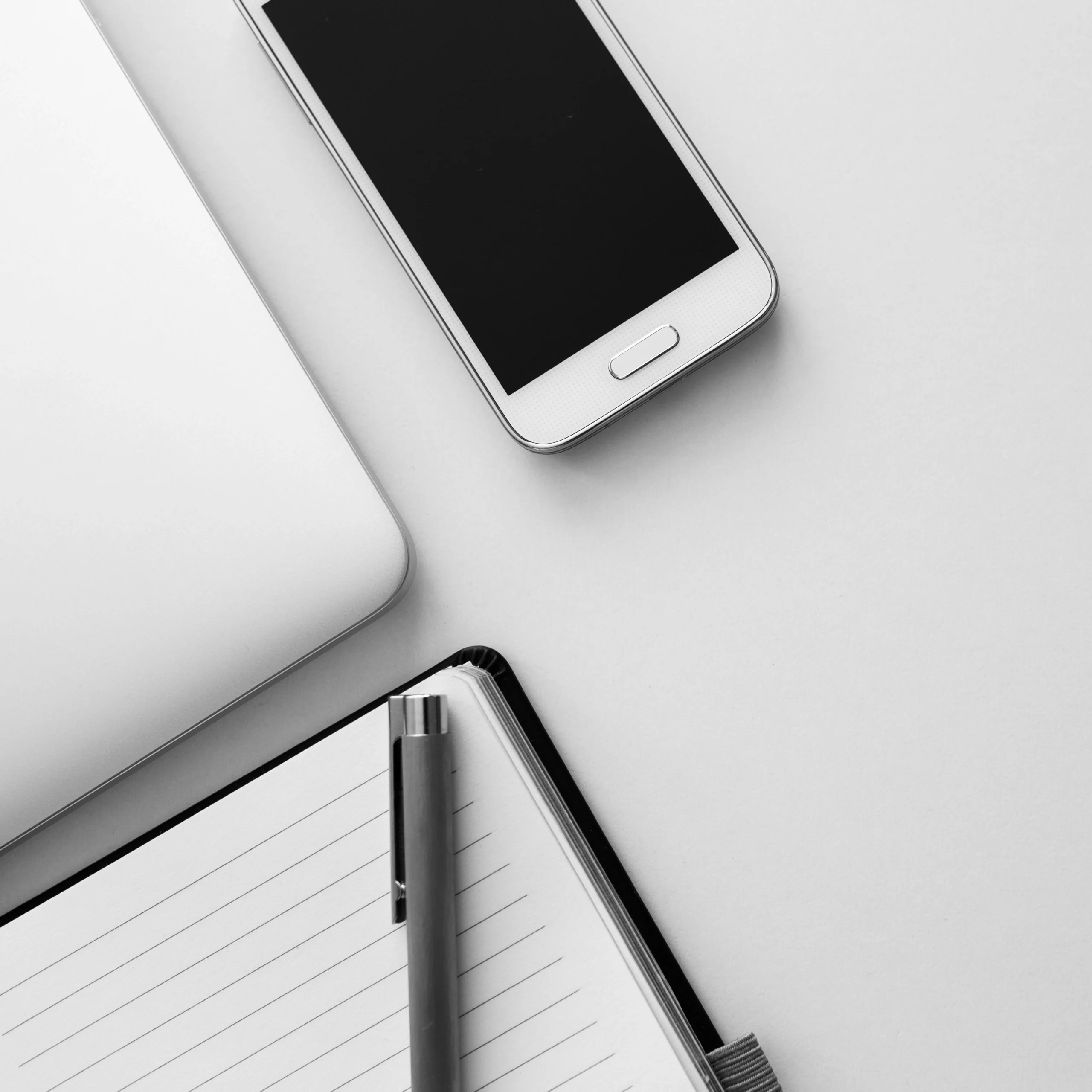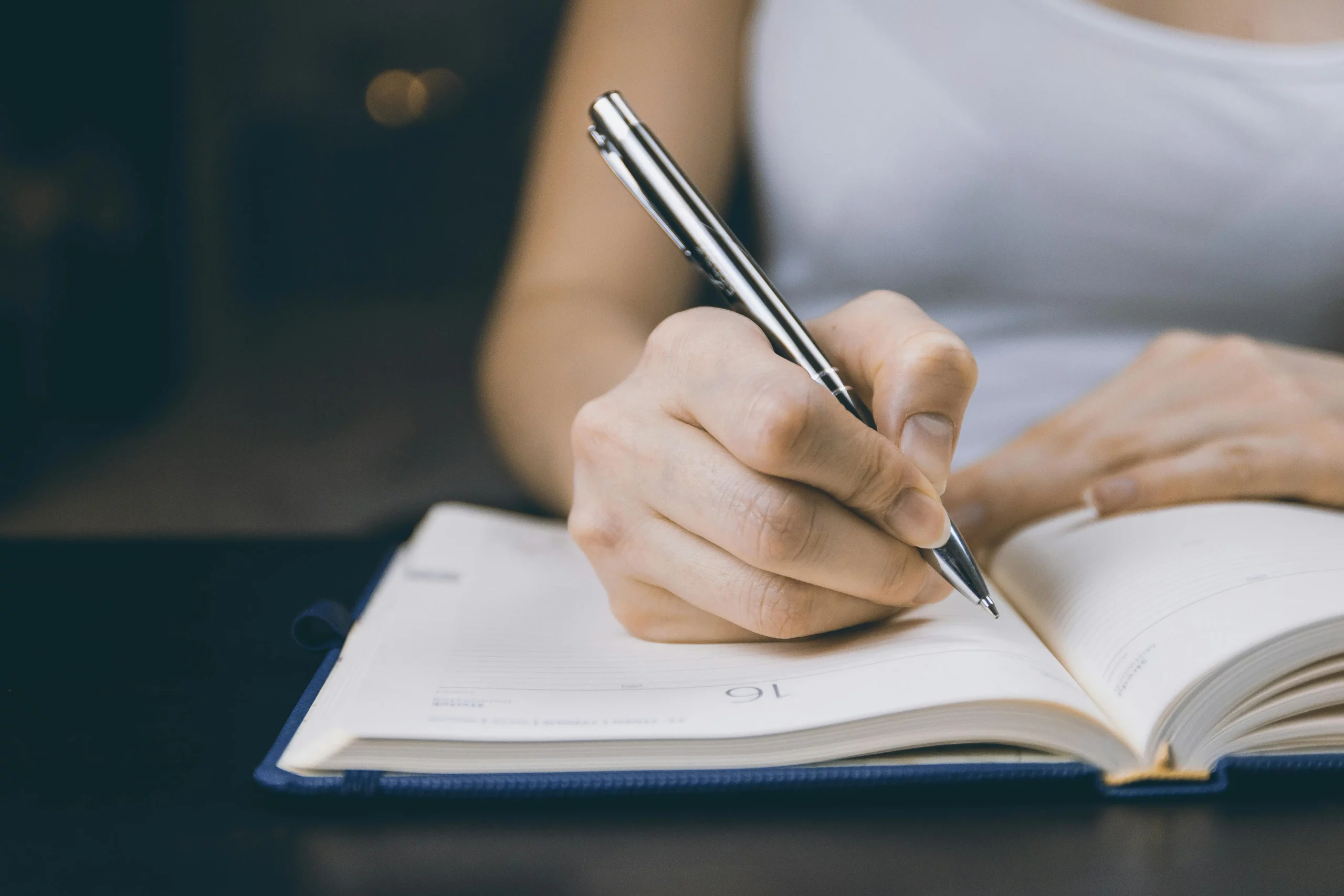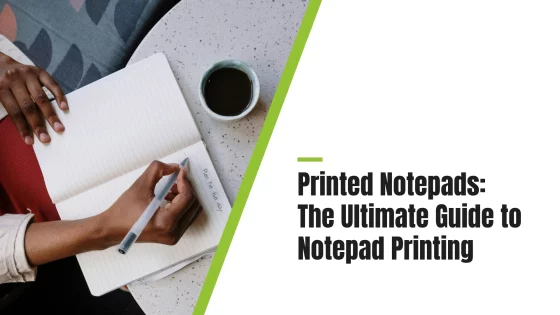Printed Notepads: The Ultimate Guide to Notepad Printing
Everything You Need to Know About Custom Notepads for Business, Events, and Branding
In an increasingly digital world, you might assume printed notepads are obsolete—but that couldn’t be further from the truth. From offices to exhibitions, printed notepads continue to offer practical value and lasting brand visibility.
This comprehensive guide covers everything you need to know about printed notepads, including design options, printing methods, eco-friendly alternatives, and real-world use cases. Whether you’re a small business owner, event planner, or marketer, this guide will help you make informed decisions that boost your brand and bottom line.
What Are Printed Notepads?
Printed notepads are paper pads pre-designed with company branding, messaging, or practical layouts like lines, grids, or checklists. They are typically bound at the top or side and come in various sizes, paper types, and finishes.
Common Types:
- Business notepads – Branded for everyday use in offices
- Promotional notepads – Ideal for giveaways at events and trade shows
- Educational notepads – Personalised for schools or training programmes
- Retail & gift notepads – Stylish designs for resale or customer gifting
Why Use Custom Printed Notepads?
Printed notepads serve as a powerful and affordable branding tool. They offer day-to-day utility while reinforcing your company’s identity.
Top Benefits:
- Brand Exposure: Keeps your logo visible on desks, counters, and in meetings
- Cost-Effective: Bulk notepads can cost as little as £1.20 per pad
- High Retention: Most recipients keep them for months or longer
- Professionalism: Adds polish during client interactions or events
- Daily Utility: Unlike leaflets or flyers, notepads get used frequently
💡BPMA reports that 76% of people remember the brand on promotional items, and over 55% retain them for a year or more.

Key Features of a Printed Notepad
Choosing the right combination of materials and features ensures your notepad is fit for purpose—and brand-friendly. For long-term use, consider formats like wirobound notepads, and for high-volume campaigns, glued notepads offer great value.
Paper Type & Weight
- 80gsm – Standard for note-taking
- 100–120gsm – Offers a premium feel
- Recycled options – Great for eco-conscious brands
Sizes
- A6 – Compact and portable
- A5 – Most popular and versatile
- A4 – Best for forms or educational content
- A3 – Great for sketching or visuals
- DL – Ideal for lists or promotional slips
Binding Options
- Glued (padded) – Tear-off pages
- Spiral/wirobound – More durable
- Stapled – Budget-friendly
- Hardback – Premium, often used for gifting
Covers & Backing
- Covers – Optional; printed card or clear plastic
- Backing – Typically chipboard or greyboard for support
Printing Methods
- Digital printing – Fast, cost-effective for small runs
- Offset printing – Best for bulk orders with colour consistency
How Are Notepads Printed?
Knowing how printed notepads are made helps ensure a smoother project from start to finish.
Step-by-Step Process:
- Submit Print-Ready Artwork – Print Ready PDF format is preferred
- Select Specifications – Paper, size, binding, colour options
- Approve a Proof – Digital or printed sample
- Production Begins – Digital or offset printing
- Finishing – Cutting, gluing, binding
- Delivery – Shipped UK-wide
✅ Pro Tip: Check with your printer about bleed, margin, and resolution requirements to avoid design issues.
Want to dive deeper into the entire process? How Are Printed Notepads Made and Why Are They Still Relevant in 2025?

What You Need to Know About Eco-Friendly Notebook Printing
Many businesses are shifting toward sustainable branding practices—and notepads are no exception.
- Use of recycled or FSC-certified paper
- Soy or vegetable-based inks
- Biodegradable glues and bindings
- Carbon-balanced shipping and production
Looking to gain deeper knowledge on eco-friendly practices in notebook printing? Learn more.
Digital vs. Offset Printing
One of the most important decisions when creating custom notepads is selecting your printing method. The two most common options are digital and offset printing, each offering distinct advantages depending on your goals, volume, and budget.
Digital printing is ideal for short runs, quick turnarounds, and projects that require personalisation or frequent design changes. Offset printing, on the other hand, offers superior colour consistency and is typically more economical for large-scale orders. If you’re running a high-volume campaign or aiming for Pantone colour accuracy, offset may be the better fit.
To make an informed decision that aligns with your branding goals and budget, visit Digital vs. Offset Printing for Notepads: Pros and Cons for a side-by-side comparison and expert recommendations.
Building the Perfect Notepad: Every Element Matters
What separates a forgettable notepad from one that customers use daily? The answer lies in design precision. From the weight of the paper to the choice of binding, each component affects usability and brand perception.
Understanding the anatomy of a notepad allows you to create something that’s not only functional but also visually aligned with your brand. Whether you’re opting for spiral binding, glued pads, or hardback covers, each choice has its own advantages depending on context—be it internal use, events, or client gifting.
To dive deep into the features that make notepads stand out, including size selection, page layout, cover material and more, visit The Anatomy of a Perfect Notepad: Paper, Binding, Size & More.

Troubleshooting: Why Your Notepads Aren’t Turning Out Right
If you’ve invested in printed notepads but the final product feels underwhelming—whether in print quality, layout, or general appearance—there are often a few common culprits. From misaligned margins to poor colour contrast and blurry logos, small errors in your design file or production choices can lead to disappointing results.
This guide is especially useful if you’re managing your own artwork or collaborating with a third-party designer. It helps identify areas where things commonly go wrong and offers simple fixes that can dramatically improve print quality and overall presentation.
Explore Why Aren’t My Printed Notepads Turning Out Right? 7 Common Mistakes to ensure your next batch delivers the professional, branded look you’re aiming for.
Should You Add a Cover to Your Custom Notepad?
Notepad covers may seem like a small detail, but they can significantly affect both durability and first impressions. A cover protects the pages, reinforces your branding, and often gives the pad a more polished, premium appearance—ideal for client-facing materials or resale items.
That said, not every notepad requires a cover. In settings like internal team meetings or quick notetaking environments, going coverless may reduce costs without affecting functionality.
If you’re on the fence, Do I Really Need a Cover for My Notepad? Pros and Cons Explained breaks down when it’s worth the investment and when it’s just extra cost.
Finding the Right Fit: Notepad Sizes Explained

Notepad size directly impacts how your branded materials are used and perceived. Smaller sizes like A6 or DL are ideal for quick notes and promotional giveaways, while A4 and A5 offer more writing space—perfect for offices, client meetings, or educational settings.
Choosing the right format depends on your intended audience, the purpose of the pad, and how you want your brand to be experienced. Going too small might limit usability, while going too large may increase costs unnecessarily.
How to Choose the Right Size for Your Printed Notepads offers real-world examples, use-case guidance, and visual comparisons to help you pick the perfect size with confidence.
Avoid These Common Notepad Printing Mistakes
Mistakes to Avoid:
- Uploading low-resolution artwork (use 300dpi minimum)
- Ignoring bleed and safety margins
- Using hard-to-read fonts or colours
- Overloading the design with text
- Choosing incorrect paper weight for the intended use
✅ Take a look at our printed notepad design tips to stay on track.
Still having trouble? Read We Analyzed 100 Notepad Designs: Here’s What Makes Them Work.
Do Branded Notepads Really Work? The Data Says Yes
While anecdotes are powerful, data-driven insights offer proof that custom notepads deliver tangible marketing value. From legal firms to charities and retail brands, UK businesses are seeing measurable results from incorporating notepads into their strategies.
Survey: 67% of Small Businesses Use Custom Notepads for Brand Recall breaks down the stats behind why notepads remain a trusted branding tool in 2025. Discover how other companies are using them, and how you can too.
Creative Ways to Stand Out with Notepads at Events
Event giveaways often end up in the bin—but not notepads. They’re portable, useful, and ideal for subtle branding that attendees keep using long after the event ends.
- Add your event schedule or QR code
- Include checklists or lined pages to encourage use
- Choose formats like A6 or DL for easier carry
Get inspiration from 15 Creative Ways to Use Custom Notepads at Events and Trade Shows.

Smart Uses for Notepads Inside the Office

Notepads aren’t just for external use. They’re perfect for internal branding and help reinforce your business’s visual identity with your team.
- Branded meeting pads
- Reception notepads for visitors
- Internal checklists and task sheets
Find more in Top 10 Uses for Personalised Notepads in the Office.
Final Thoughts: Make Printed Notepads Work for Your Brand
Printed notepads remain a smart, versatile marketing tool—blending form and function. With the right design and printing strategy, they can reinforce your brand, create real value for users, and stand out in both digital and physical environments.
If you’re still planning your design, we recommend reading Custom Printed Notepads: The Ultimate Branding Tool for Small Businesses and How to Design a Notepad That Represents Your Brand.
Have questions? Our team is here to help. Whether you’re ordering your first batch or scaling up for an event, we’ll make sure your notepads leave a lasting impression.
